Double Skin Façade CFD Simulation Training
$80.00 $40.00 Student Discount
- The problem numerically simulates a double-skin facade using ANSYS Fluent software.
- We design the 3-D model by the Design Modeler software.
- We Mesh the model by ANSYS Meshing software, and the element number equals 490725.
- We define the Ideal Gas option for air density to consider the buoyancy effect.
- We define a Heat Source for the glass part.
Click on Add To Cart and obtain the Geometry file, Mesh file, and a Comprehensive ANSYS Fluent Training Video.
To Order Your Project or benefit from a CFD consultation, contact our experts via email (info@mr-cfd.com), online support tab, or WhatsApp at +44 7443 197273.
There are some Free Products to check our service quality.
If you want the training video in another language instead of English, ask it via info@mr-cfd.com after you buy the product.
Description
Description
The present problem simulates the airflow inside the interior of the double-skin facade of buildings using ANSYS Fluent software. We perform this CFD project and investigate it by CFD analysis.
In double-skin facades, the collected air uses heating received from sunlight and moves upward due to the effect of buoyancy, causing heating and cooling inside the buildings.
The present model is designed in three dimensions using Design Modeler software. The model’s geometry is related to the double skin facade with dimensions of 0.6 m * 3.2 m * 5 m in the shape of a rectangular cube, consisting of a duct section for airflow and a glass section for receiving solar radiation heat.
A rectangular inlet valve (0.2 m) is located at the bottom of the glass wall, and a rectangular outlet valve (0.2 m) is located above the glass wall.
The meshing of the model has been done using ANSYS Meshing software. The element number is 490725.
Facade Methodology
This work aims to investigate the effect of buoyancy on the behavior of heated air inside the interior of a double-skin facade. The interior of this facade consists of a glass part as a source of heat from the sun and a duct-shaped part for airflow.
Therefore, it is assumed that the glass part of the model has a constant amount of heat generation equal to 6940 W/m3.
The walls of the buildings are made of brick and have a thermal boundary condition of Convection; Thus, free convection condition is enabled, and the air temperature inside the buildings is equal to 300 K, and the heat transfer coefficient is equal to 23 W/m2K.
The inlet airflow to this double-skin facade has a temperature of 304.55 K and pressure equal to atmospheric pressure.
Also, to study the buoyancy effect, the air density is defined to change based on ideal gas law, and the gravitational force equal to 9.81 m/s2 is defined in the model.
Facade Conclusion
At the end of the solution process, two-dimensional and three-dimensional contours related to pressure, velocity, and temperature, as well as two-dimensional and three-dimensional velocity vectors, are obtained.
As can be seen from the behavior of velocity vectors, the airflow inside the chamber moves upwards, indicating the buoyancy effect of the ventilation system.

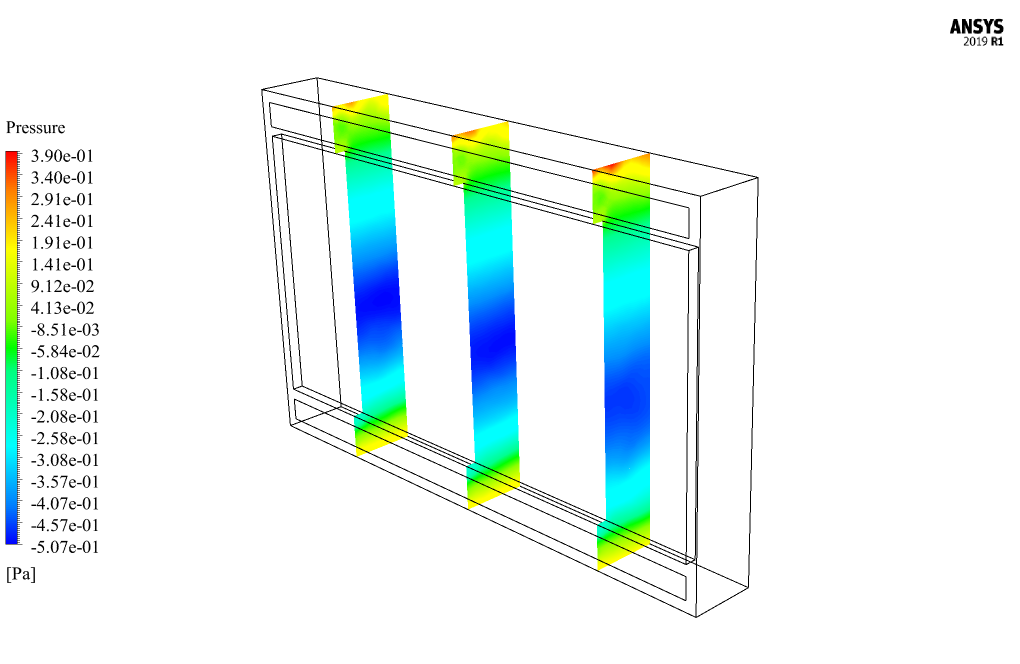
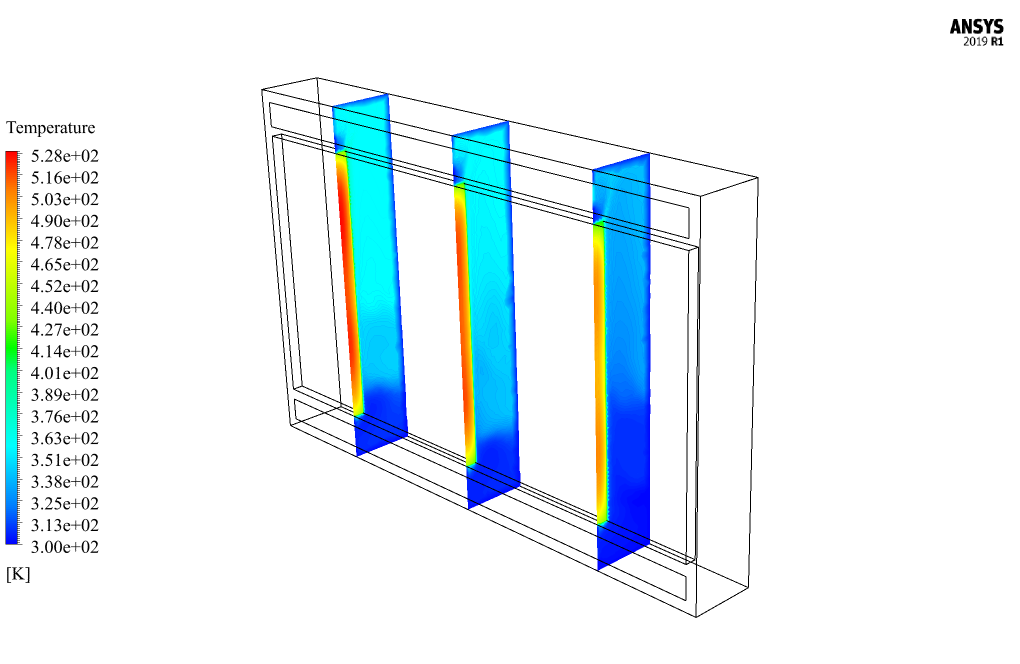
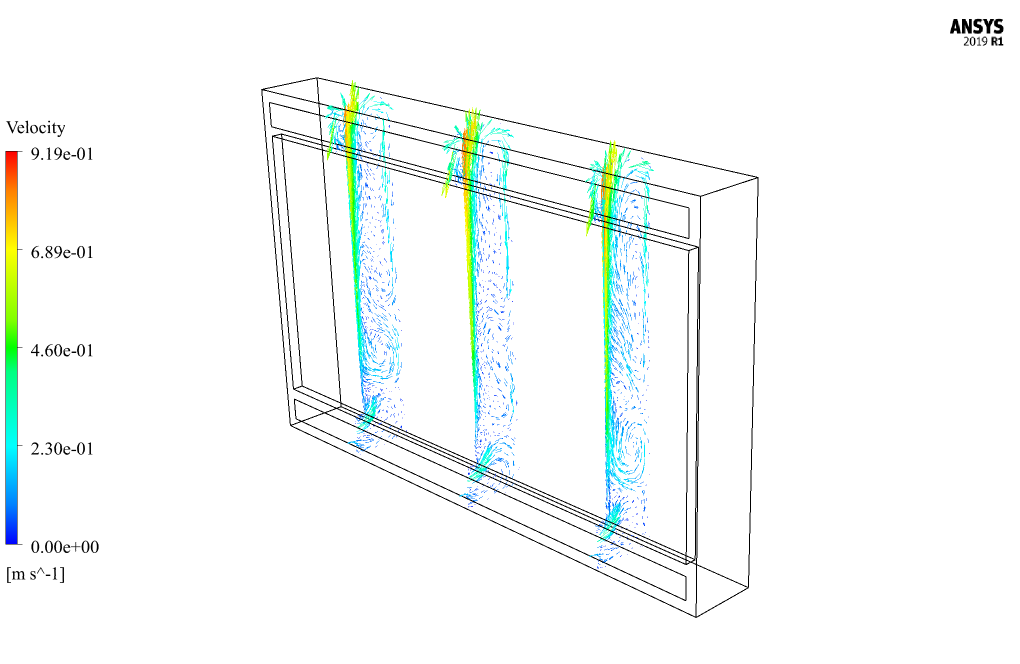
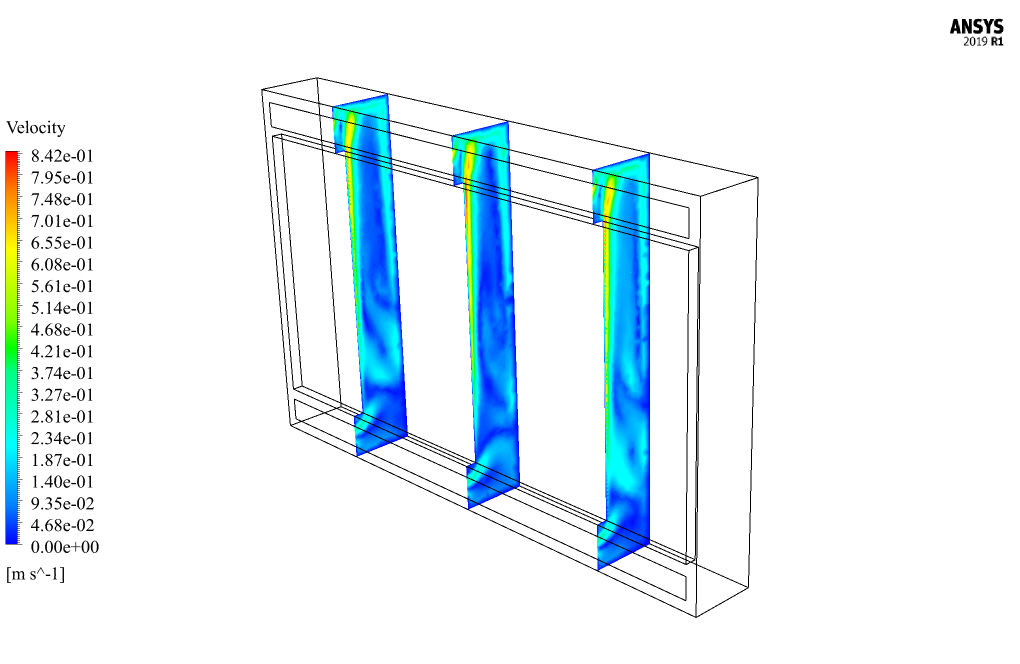
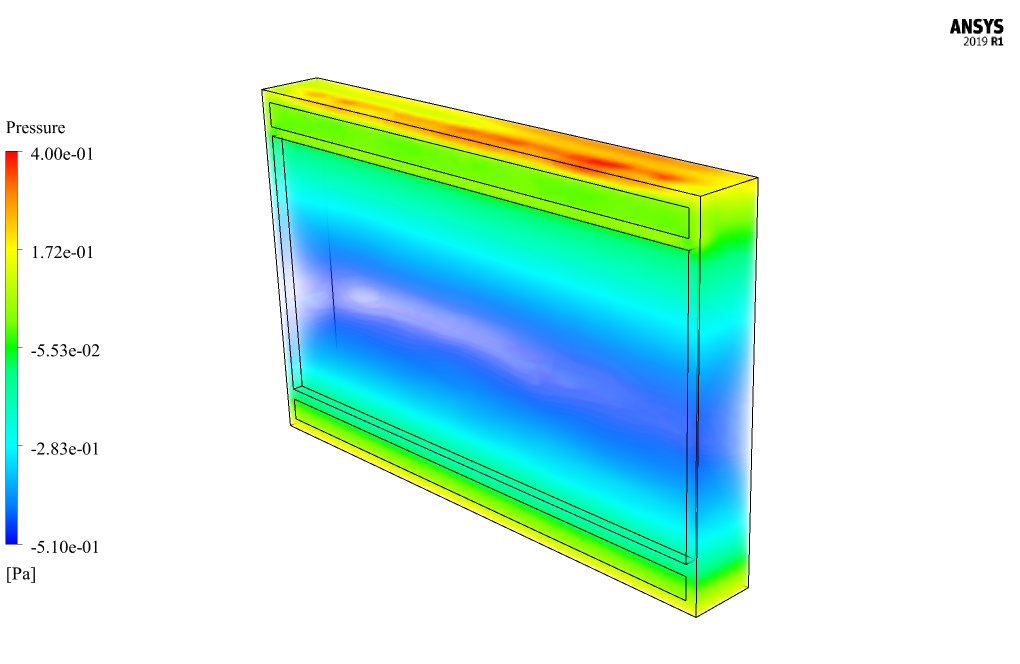
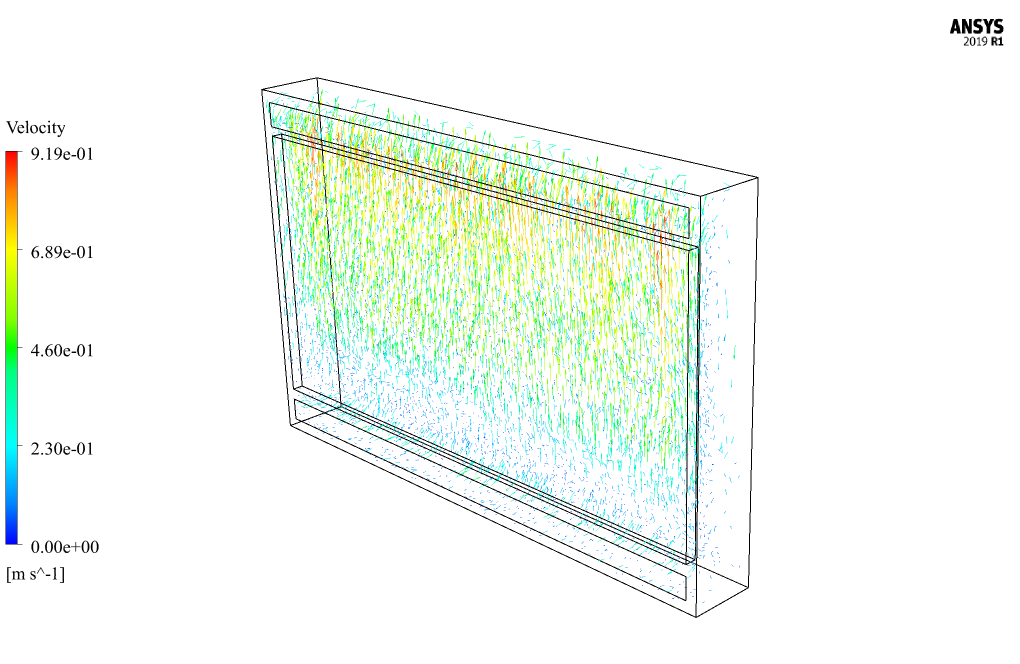
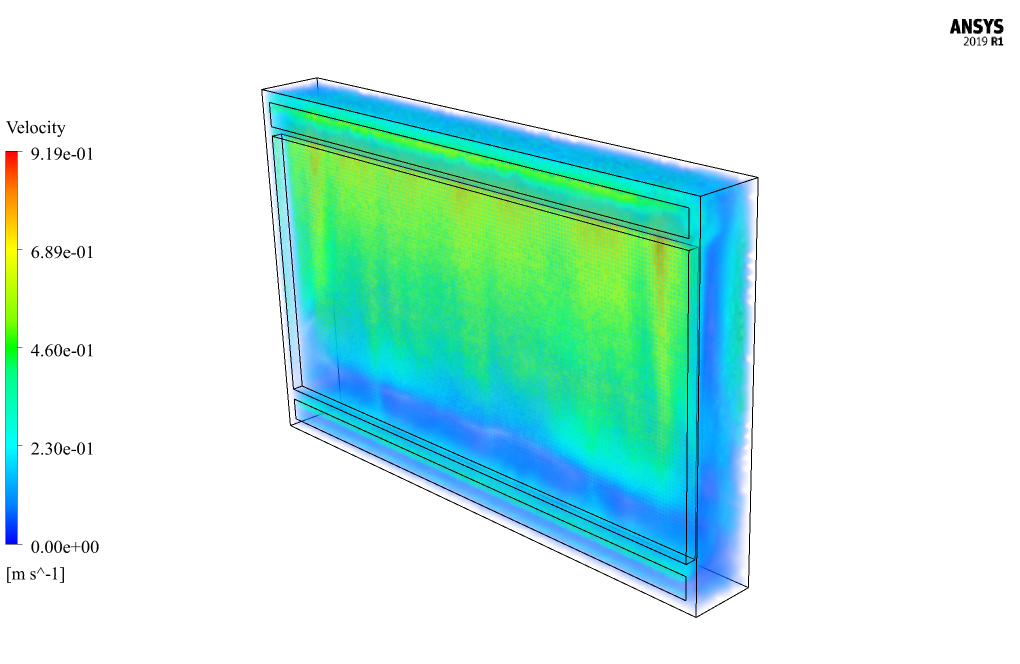
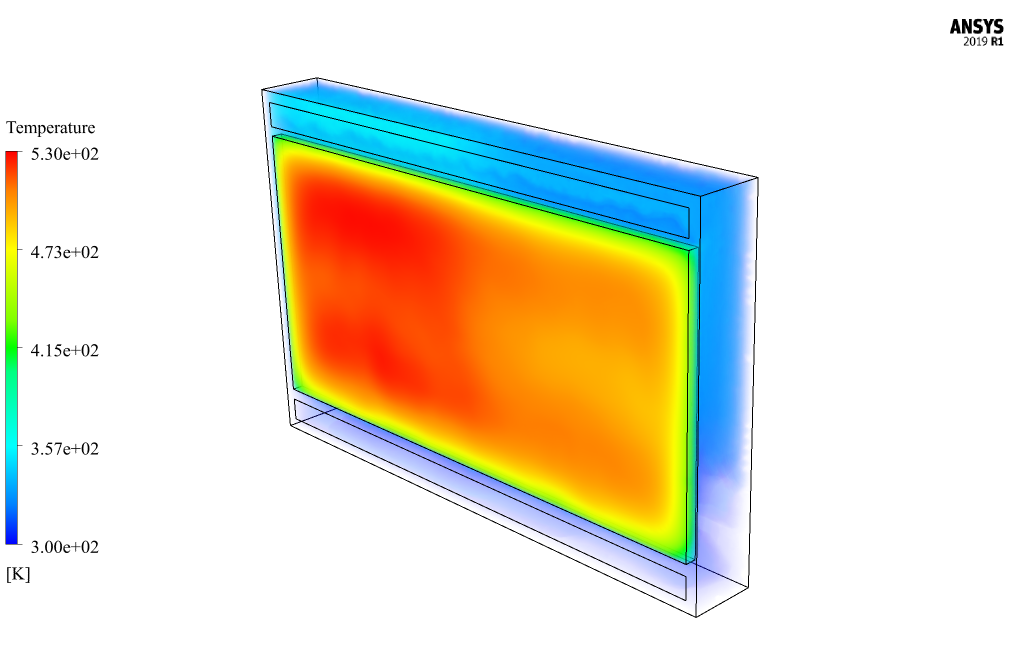
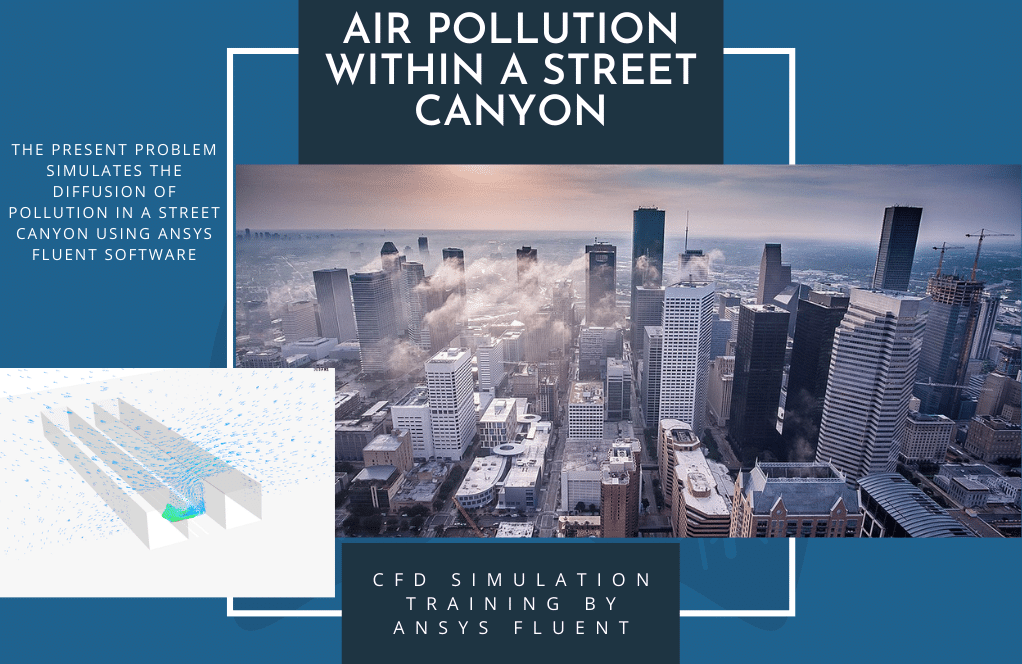
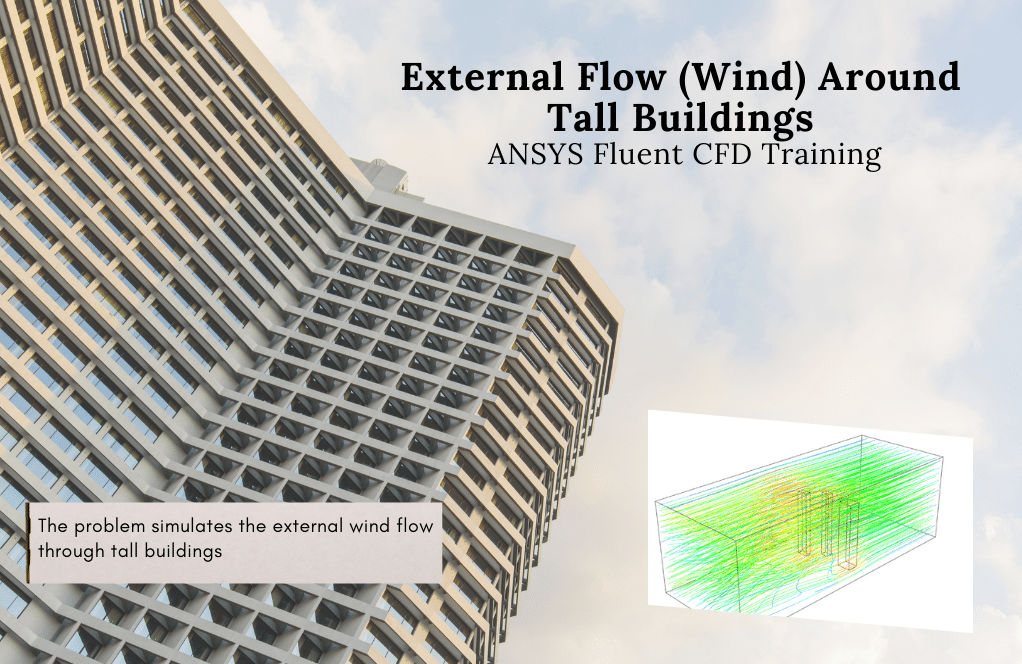

Prof. Shania Paucek V –
I was amazed by how well this double-skin façade simulation captured the effects of solar radiation and buoyancy! Using the CFD analysis to evaluate building cooling and heating is brilliant. Great study material for architects and engineers alike.
MR CFD Support –
Thank you for the positive feedback! We’re thrilled to hear that you found the double-skin facade simulation insightful and useful for understanding the impact of solar gain and natural convection in building design. It’s rewarding to know our training materials are helping professionals in their fields. If you have further inquiries or need more in-depth study material, please let us know!
Stephen DuBuque –
I’m thrilled with how effective the double-skin facade training was! The visual results using the contours for temperature and airflow were particularly insightful.
MR CFD Support –
Thank you for your positive feedback! It’s great to hear that the training was effective and that the visual aspects of the simulation provided clear insights. We strive to create learning materials that are both educational and intuitive.
Libbie Ebert –
The training helped me understand the nuances of airflow in double-skin facades. Could you please clarify if there’s any impact of ambient outdoor temperature in this simulation?
MR CFD Support –
Yes, the ambient outdoor temperature can have an impact on the simulation by affecting the heat transfer through the glass and the air temperature difference which drives buoyancy. However, the specific effect would depend on how the outdoor temperature was taken into account when setting up the boundary conditions. In this case, the thermal boundary condition of convection for the walls and the solar heat gain are considered, but detailed information about the outdoor temperature impact needs to be provided in the setup.
Ulices Hickle –
This training did an exceptional job in covering the airflow dynamics in double-skin facades. The thorough investigation and detailed simulation provide a solid understanding of the impact of buoyancy on these systems, which is essential knowledge for architects and HVAC engineers. The use of ANSYS Fluent for the CFD analysis highlights tangible, visual insights into the airflow patterns. It’s evident that the course effectively replicates the complexities of these facade systems and showcases how solar radiation can be harnessed for energy efficiency. Great work!
MR CFD Support –
We truly appreciate your positive feedback and are glad to hear that you found our Double Skin Façade CFD Simulation Training so beneficial. Understanding the influence of buoyancy in facade systems is indeed crucial for professionals in the field, and we’re happy that our product met your expectations. Thank you for choosing MR CFD’s learning resources and taking the time to write such a thoughtful review!
Alberto Padberg –
The tutorial was incredibly detailed and made grasping the concepts of buoyancy effects in a double-skin facade very accessible. The heat generation assumption for the glass part was particularly insightful.
MR CFD Support –
Thank you for your positive feedback! We’re thrilled to hear that our tutorial was able to clarify the concepts of buoyancy and the heat generation in double-skin facades for you. If you have further questions as you continue to learn, don’t hesitate to reach out!
Deanna Johns –
I’m really impressed with how effectively the Double Skin Façade CFD Simulation demonstrated the effect of buoyancy on airflow! Would definitely recommend for those studying energy-efficient building designs.
MR CFD Support –
Thank you for your positive feedback! We’re delighted to hear that our Double Skin Façade CFD Simulation was helpful for your studies on energy efficiency in buildings. Your recommendation is much appreciated!